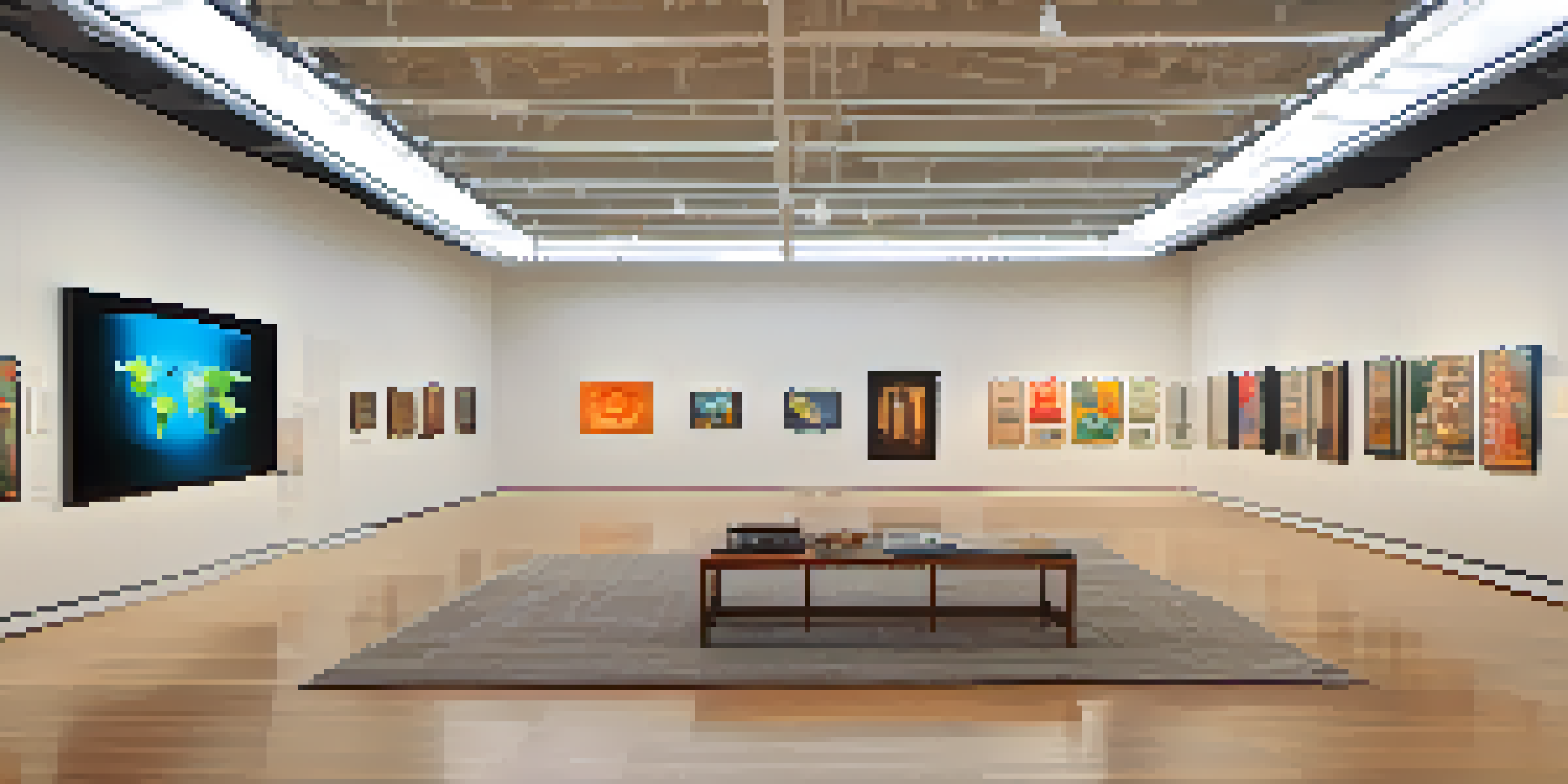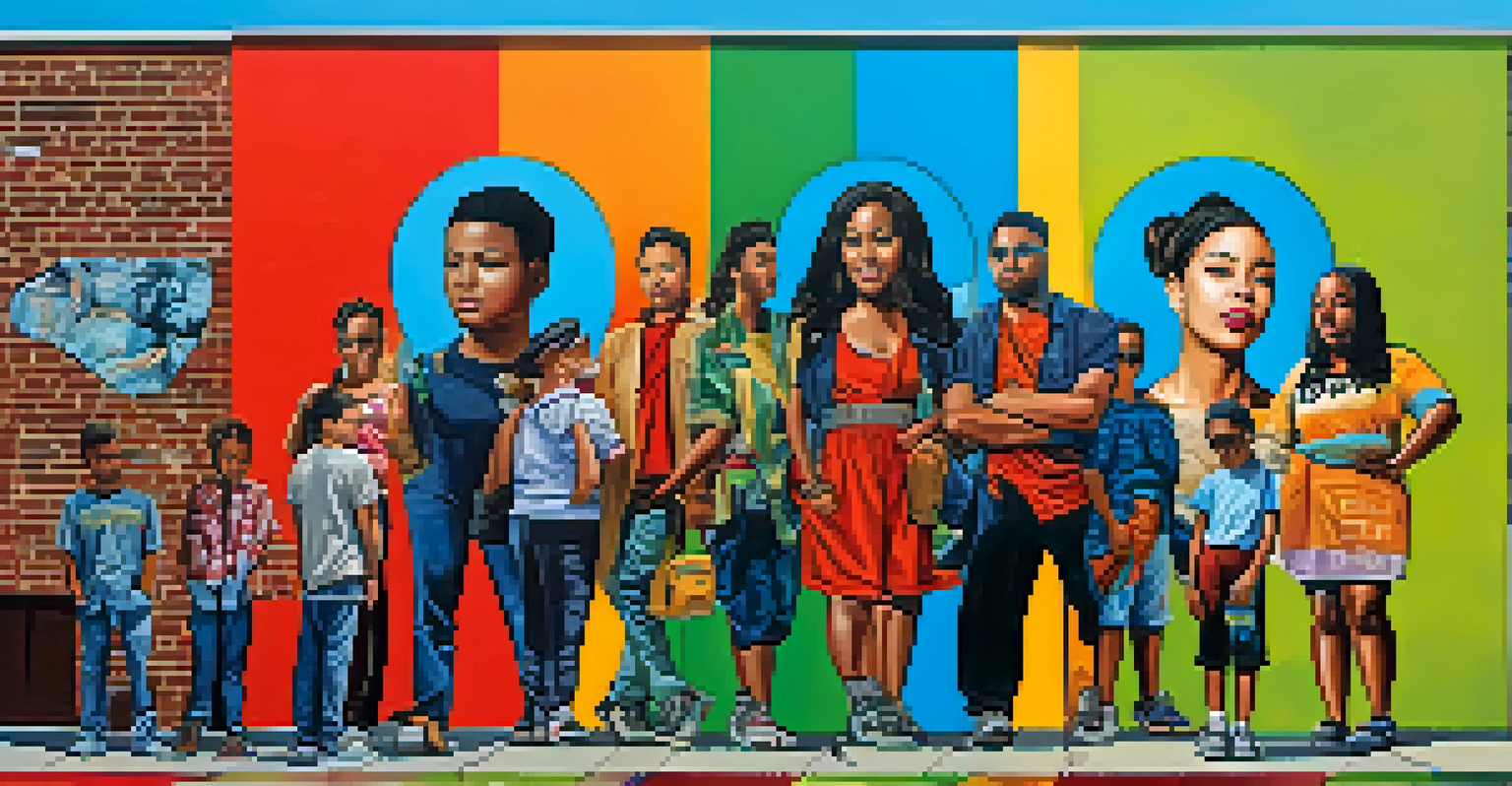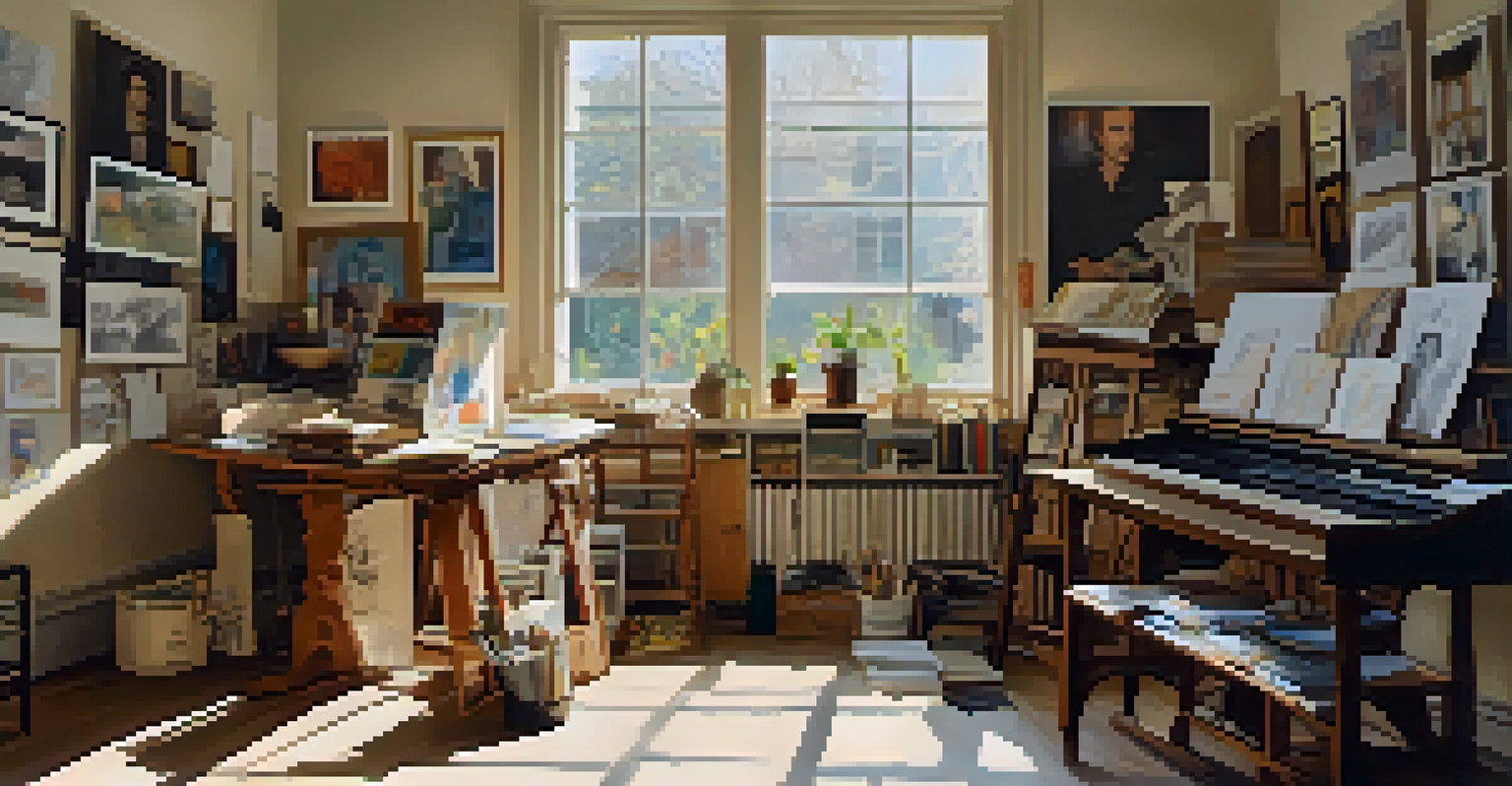Exploring Identity in Contemporary Art: A Modern Perspective

The Evolution of Identity in Art Through the Ages
Identity has always been a pivotal theme in art, but its exploration has evolved dramatically over time. In earlier periods, artists often focused on collective identities, reflecting societal norms and cultural narratives. Today, contemporary art delves into the nuances of personal and fragmented identities, showcasing the complexities of the modern individual.
Art should comfort the disturbed and disturb the comfortable.
As we move from traditional forms to contemporary expressions, we see artists challenging the status quo. They’re not just depicting who we are but questioning what it means to belong in an increasingly diverse world. This shift allows for a broader exploration of gender, race, and personal experiences, giving voice to previously marginalized perspectives.
Related Resource
For instance, artists like Kehinde Wiley and Frida Kahlo use their work to redefine cultural identity, drawing connections between personal history and broader social issues. By blending personal anecdotes with universal themes, they invite viewers to reflect on their own identities and experiences, fostering a deeper understanding of ourselves and each other.
The Role of Technology in Shaping Identity
In today's digital age, technology plays a crucial role in how identities are formed and expressed. Social media platforms, for example, have become modern canvases where individuals curate their identities for a global audience. This phenomenon has democratized art and self-expression, allowing anyone with an internet connection to share their story.

However, this accessibility also brings challenges. The pressure to present a polished version of oneself can lead to a disconnect between one's real identity and their online persona. Artists like Amalia Ulman explore this tension, using their work to critique the curated identities we often see online, prompting viewers to question authenticity.
Identity's Evolution in Art
Art has shifted from collective identities to exploring personal and fragmented identities, reflecting the complexities of modern life.
Moreover, digital tools enable new forms of artistic expression, from virtual reality to digital installations, further expanding the conversation around identity. These innovations encourage artists to blend the physical and virtual realms, inviting audiences to engage with identity in ways that were unimaginable just a few decades ago.
Intersectionality: A Key Concept in Modern Identity
One of the most significant shifts in contemporary art is the embrace of intersectionality. This concept acknowledges that individuals hold multiple identities that intersect and influence their experiences. Artists today increasingly highlight these intersections, exploring how race, gender, sexuality, and class shape our understanding of identity.
The artist's job is to be a witness to their time in history.
For example, artists like Zanele Muholi capture the complexities of identity within the LGBTQ+ community, emphasizing the importance of representation. Their work not only challenges stereotypes but also celebrates the richness of diverse identities, inviting viewers to appreciate the multiplicity of human experience.
Related Resource
By incorporating intersectionality into their narratives, contemporary artists encourage us to look beyond singular identities. They prompt discussions about privilege, oppression, and the shared humanity that connects us all, fostering a more inclusive dialogue about what it means to belong.
Art as a Tool for Activism and Social Change
Contemporary art has increasingly become a vehicle for activism, empowering artists to address social issues related to identity. Through their work, artists raise awareness about systemic injustices, using their platforms to advocate for change. This activism is often rooted in personal narratives, making the art not just a reflection of identity but a call to action.
Consider the works of artists like Ai Weiwei, whose installations confront human rights violations and the plight of refugees. By blending personal stories with broader themes of identity, these artists engage audiences on a deeper level, urging them to reflect on their own roles in creating social change.
Technology Shapes Identity
Digital platforms allow individuals to curate their identities while also presenting challenges around authenticity and self-representation.
Moreover, art activism often fosters community engagement, connecting individuals through shared experiences and collective identity. As artists collaborate with communities, they cultivate spaces for dialogue and understanding, transforming their work into a powerful force for advocacy and healing.
The Influence of Globalization on Identity in Art
Globalization has dramatically transformed the landscape of contemporary art, influencing how identity is represented and perceived. As cultures interact more than ever, artists draw inspiration from diverse traditions and perspectives, creating a rich tapestry of global influences. This cross-pollination of ideas encourages a broader understanding of identity that transcends geographical boundaries.
Artists like Yinka Shonibare explore issues of colonialism and cultural identity, reflecting the complexities of living in a globalized world. Their work often highlights the interplay between local and global narratives, prompting viewers to consider how historical contexts shape our current identities.
Related Resource
Additionally, globalization allows for the dissemination of art across borders, enabling underrepresented voices to gain visibility in the global art scene. This shift enriches the conversation around identity, inviting a multitude of perspectives that reflect the diverse experiences of individuals worldwide.
The Role of Personal Narrative in Contemporary Art
Personal narrative plays a vital role in how contemporary artists explore identity. By sharing their own stories, artists create a bridge between their experiences and those of their audience. This intimate connection fosters empathy and understanding, encouraging viewers to reflect on their own identities in relation to the artist's narrative.
For instance, artists like Tracey Emin use autobiographical elements in their work to confront themes of love, loss, and identity. Her raw and vulnerable storytelling resonates with many, inviting audiences to engage with complex emotions and experiences.
Intersectionality in Modern Art
Contemporary artists highlight the intersections of race, gender, sexuality, and class to provide a more nuanced understanding of identity.
These personal narratives not only enrich the artwork but also create spaces for dialogue about shared humanity. As viewers connect with these stories, they are reminded of the power of art to illuminate our common experiences, fostering a sense of community and belonging.
The Future of Identity in Contemporary Art
As we look to the future, the exploration of identity in contemporary art is likely to evolve further, reflecting the changing dynamics of society. With ongoing conversations around social justice, technology, and globalization, artists will continue to push boundaries and challenge perceptions of identity. The rise of artificial intelligence and virtual realities may also influence how we understand and represent ourselves.
Emerging artists are already experimenting with new mediums and platforms, merging technology with identity exploration in innovative ways. This evolution not only enriches the artistic landscape but also prompts us to consider how our identities might shift in response to these changes.

Ultimately, the future of identity in contemporary art will depend on our collective willingness to engage with diverse stories and perspectives. By fostering an environment that values inclusivity and empathy, we can ensure that the conversation around identity remains vibrant and relevant, reflecting the complexities of our shared human experience.